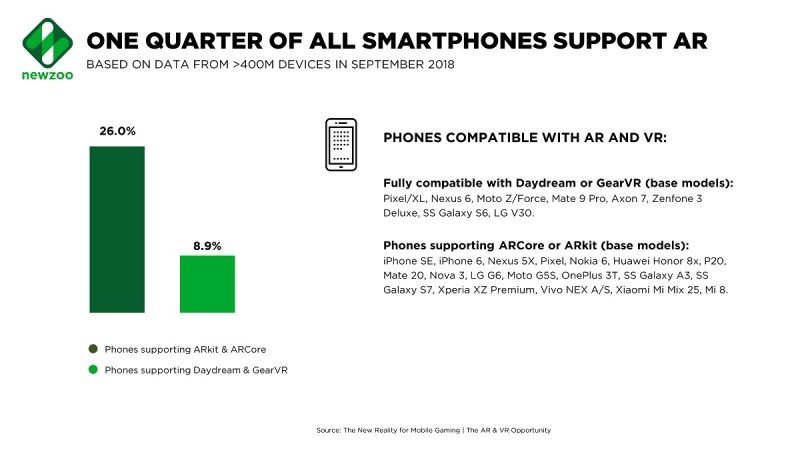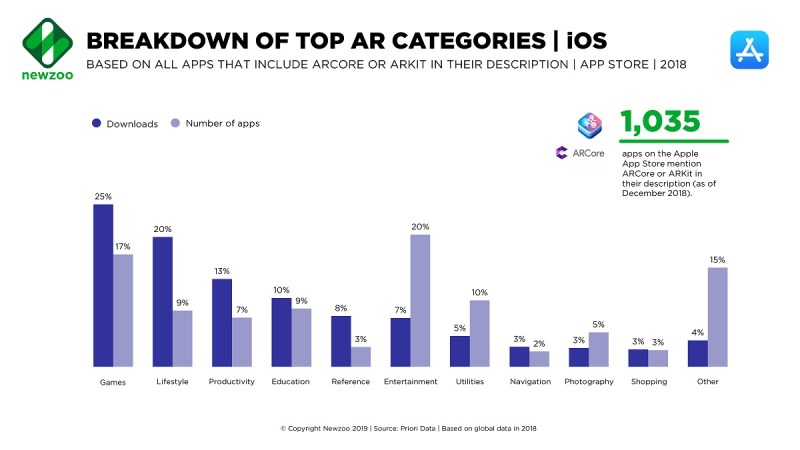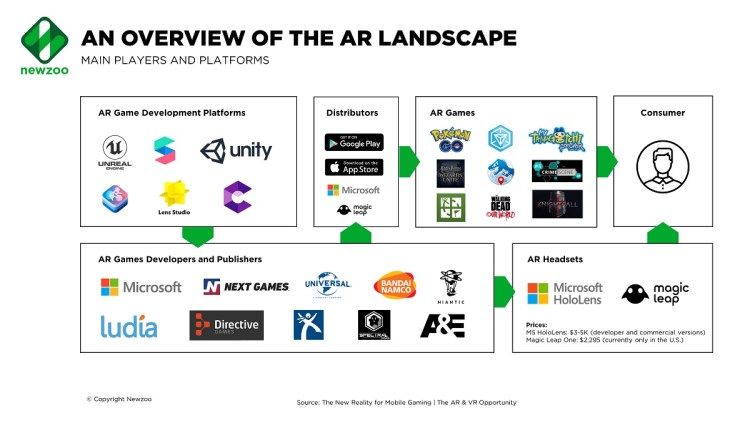Virtual reality is clunky. Augmented reality is less so. And so it makes sense that AR has a bigger opportunity on mobile devices than VR, according to a new report from market researcher Newzoo.
Newzoo said that immersion is a key reason why many consumers love engaging with gaming. And AR and VR alike can make game experiences even more compelling and interactive, in ways that were—until now—impossible. VR in particular brings gamers one step closer to the immersion.
But VR is currently limited by cumbersome setup and expensive hardware requirements. For this reason, VR experiences have more potential on console and PC, rather than on mobile. AR, on the other hand, has boundless potential on mobile, with Google and Apple investing heavily in AR—through ARKit and ARCore, respectively, Newzoo said.
Newzoo made the following observations.
June 5th: The AI Audit in NYC
Join us next week in NYC to engage with top executive leaders, delving into strategies for auditing AI models to ensure fairness, optimal performance, and ethical compliance across diverse organizations. Secure your attendance for this exclusive invite-only event.
Mobile dominates AR ecosystem

Above: Newzoo’s view of smartphone AR.
The AR landscape mostly centers around games and applications on Android and iOS. HoloLens and Magic Leap are the two main headset options, but their high cost positions them as a better fit for enterprise applications.
Meanwhile, AR consumer devices are simply AR-capable smartphones. Games or apps with AR features are distributed in the same fashion as traditional apps—via Google Play or the App Store.
Gaming Is the most popular AR app category

Above: Top AR categories on iOS.
Newzoo recently looked at the apps on iOS and Android that include ARCore/ARKit in their descriptions. On iOS, games make up 25 percent of AR app downloads, making gaming the most popular AR category on the platform, followed by lifestyle (20 percent).
Productivity apps are popular among iOS owners. The main purpose of these is to help facilitate people’s daily life by, for example, keeping track of tasks, communicating with others, and accessing and sharing information.
Examples include Google Translate, Mind Map AR, AR Plan 3D, AR Ruler, Torch AR, Vuforia View. In terms of the number of apps available on iOS, shopping and productivity grew the fastest from the first half of 2018 to the first half of 2018 (53 percent and 43 percent, respectively).
Gaming is also the No. 1 AR app category on Google Play.
Support for VR and AR is currently limited on mobile
VR, which tilts more toward console and PC, has less potential on mobile. High-end VR headsets require peripherals, which add a vital extra layer of immersion. While there are plenty of low-cost options to turn your phone into a VR headset (e.g., Google Cardboard), interaction with the environment is limited.
Daydream and GearVR are two of the most popular options on mobile, but they are only compatible with high-end devices, which make up a smaller slice of the smartphone market. In fact, Newzoo’s Global Smartphone and Tablet Tracker shows that only 9 percent of smartphones in use are compatible (based on September 2018 data). However, many new mobile devices released going forward will have AR/VR support.
AR is currently a better fit on mobile, but support for the official development kits from Apple and Google (ARKit and ARCore, respectively) is still limited. In September 2018, 26 percent of active devices were able to use either SDK.
Google, in particular, has to optimize the kit for specific devices and currently supports a set of more than 100 devices. That might seem reasonable, but there were more than 7,000 Android models in use in that same time period. Although, Google has been steadily adding new device support each month, slowly expanding ARCore’s reach within the world’s most-used mobile operating system.


